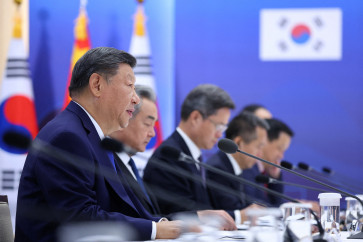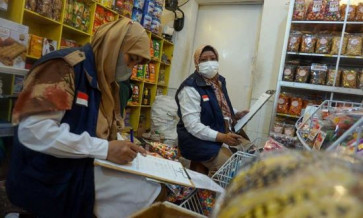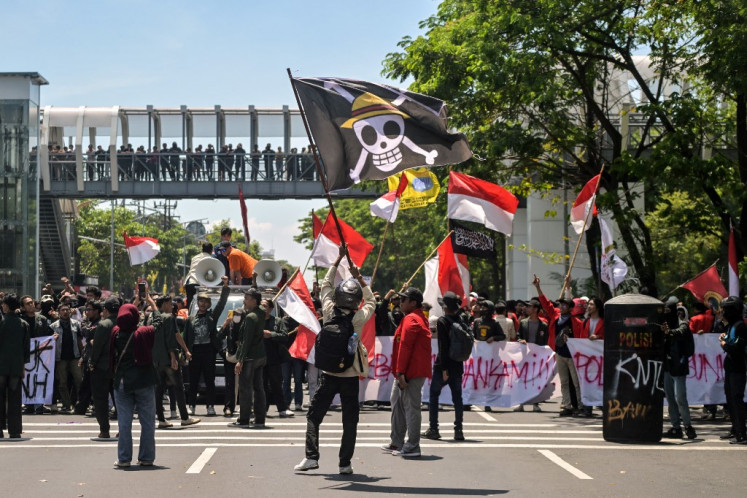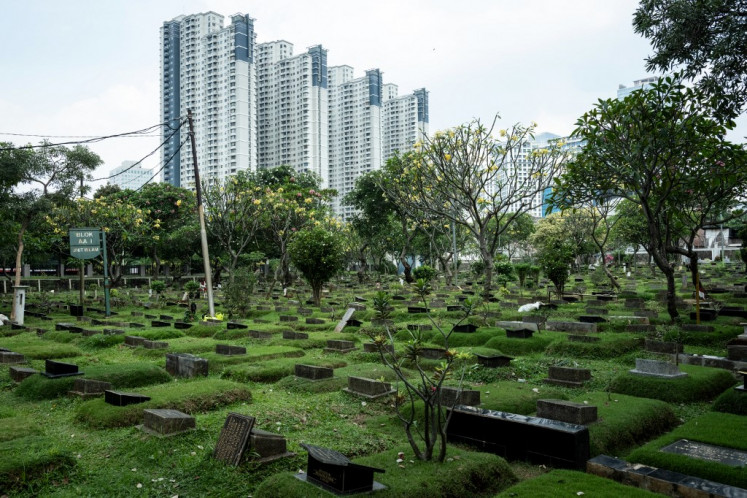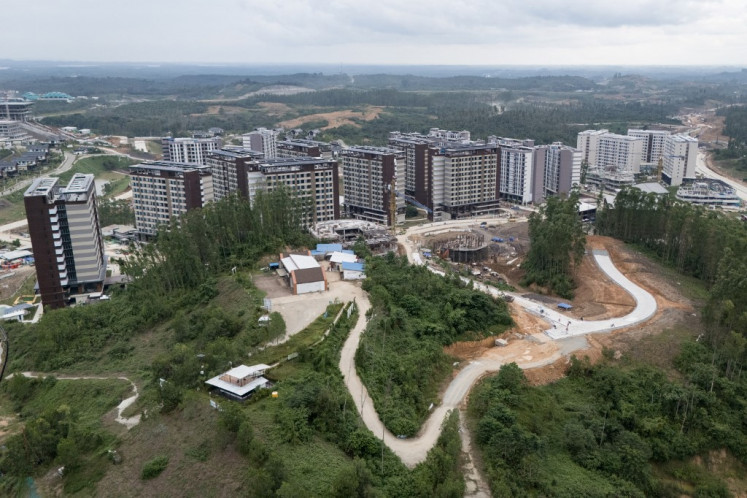Popular Reads
Top Results
Can't find what you're looking for?
View all search resultsPopular Reads
Top Results
Can't find what you're looking for?
View all search resultsFashion in full swing for Ramadan
Heritage: Svarna by Ikat Indonesia explores Middle Eastern influences with traditional songket woven fabrics
Change text size
Gift Premium Articles
to Anyone
Heritage: Svarna by Ikat Indonesia explores Middle Eastern influences with traditional songket woven fabrics.
This year’s Idul Fitri celebrations will see familiar styles — think floaty caftans and abayas — in even more familiar color palettes like understated pastels, neutrals and the occasional jewel tones.
Going by Plaza Indonesia’s annual Ramadan in Style fashion shows, Muslim fashion for Idul Fitri celebrations may come in popular silhouettes and colors.
AVA Prologue brought in a touch of Grecian glamor with a line of draped dresses cut from luscious satin silk, finished with the brand’s signature beading on the front.
Styling is relatively restrained, going with the modest fashion movement that so encapsulates the month and Indonesian fashion as of late. Curves are accentuated, not paraded, through waist cinching via a sash or a decorative draping effect.
While AVA Prologue’s styling choices are mostly focused on the front, the back is left plain and bare of any embellishments, perhaps so as not to complicate matters when you sit down a lot.
The presentation also gave us the brand’s interpretation of children’s clothing, including mostly just miniaturized versions of the dresses in the collection.
Priyo Oktaviano decidedly went for a much more formal look, eschewing his usual traditional Indonesian textile for something more classically Western in nature.
Straightforward silhouettes are elevated through fabric choices, intricately beaded and embroidered with floral patterns. Colors are muted, spanning from greyish beige to lighter, almost white with fleeting remnants of the same greige tones.
Splashes of vibrancy are present in hyperfeminine coral pinks and the lone gold tone, made luminescent through embellishments reflecting the light from the room.
Influences from the Rococo era become a key point in the collection, pared down from the pomp to something more wearable in a modern setting without compromising the opulence. Draping and fringes create an effect not unlike flappers of the 1920s, yet hemlines are longer so as to make the dresses palatable for hijabis.
Priyo’s take on menswear also did not compromise on styling, utilizing a tunic-length top to better showcase the detailing that went into the garment.
Sebastian Gunawan’s diffusion line SEBASTIANred also went back in time, preferring to bring back the retro-future vibes of the 1960s through simplified silhouettes and bold colors.
The mod look is known for its eye-popping colors and patterns in shortened hemlines, but Sebastian’s take on the theme involves lengthening it to the floor and embellishing it with metallic and glass beadwork.
While there are token looks for the mod influence, like the swishy green caftan and the black number with floral patterns, the collection tapers on to the classically Seba with lace finished in off white and embellished with the same beading.
The presentation seems a little disjointed, as jewel tone mods don’t necessarily mesh well with white lace. However, one could look at it as a day’s worth of dressing: floaty caftans for visiting relatives and hosting reunions, and classic evening gowns for the cocktails later on.
Framed: Didi Budiardjo's silhouettes are kept loose for an unobstructed view of the batik patterns.Alleira Batik’s collaboration with Didi Budiardjo also had classic caftan silhouettes, which made more sense so as to emphasize the batik patterns rather than going plain with solid colors. Styling is conservative, perhaps to showcase the batik’s tropical flower patterns rather than covering them up.
One notable look was the red knee-length number, which had a cape-like styling on the back in satiny blue, split down the middle to reveal a glimpse of red as one walks ever so slightly in the breeze.
Also in the classic camp is Parang Kencana, with colors running the gamut from the perennial black to the ever so slightly whimsical purple. The purple garments, though interesting, seem a tiny bit misplaced in a sea of black, red and brown.
Silhouettes are still loose, abayaesque for ease of movement and pattern display purposes. The final looks were a bit more daring, with cropped jackets with red embellishments giving a touch of urban to a very much conservative ensemble.
Seeing red: Parang Kencana's collection takes its inspiration from the city of Dubai and its many abaya.Svarna by Ikat Indonesia’s take on ethnic inspiration is decidedly lighter in color and mood, trading the abayas and caftans for more straightforward dresses, sleeves oversized in solid colors to contrast the traditional textiles used in the bodice.
Gold and copper tones are also contrasted with unlikely colors such as turquoise and pink, a color combination that might not be to everyone’s taste but a nifty way to stand out from the usual suspects of white and pastels that so defines Ramadan style.
Styling-wise, the garments do not seem to be coded as purely Islamic clothing, so that would give you an incentive to wear them another day. (ste)
Swish swish: Alleira Batik collaborates with designer Didi Budiardjo for a collection inspired by tropical flora.— Photos courtesy of Magnifique

.online.img_assist_custom-780x619.jpg)
-masking.img_assist_custom-780x544.jpg)
-masking.img_assist_custom-780x562.jpg)
-masking.img_assist_custom-780x567.jpg)
-masking.img_assist_custom-780x536.jpg)
-masking.img_assist_custom-780x546.jpg)

